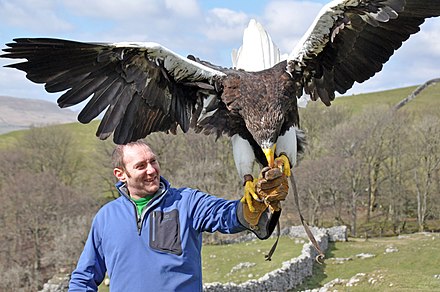Steller’s Sea Eagles, the largest eagle species by weight, have a diverse diet that primarily consists of fish and marine animals. However, they are opportunistic feeders and will consume carrion, including roadkill, when available. This behavior is not unique to Steller’s Sea Eagles, as many eagle species will scavenge for food when hunting is unproductive.
Steller’s Sea Eagles and Their Diet
Steller’s Sea Eagles are known for their impressive size and power. With a wingspan of up to 8 feet and a body weight of up to 20 pounds, these birds are capable of taking down relatively large prey. Their diet is primarily composed of fish and marine animals, such as:
- Salmon
- Trout
- Herring
- Seals
- Sea lions
- Waterfowl
However, Steller’s Sea Eagles are opportunistic feeders and will also consume carrion, including roadkill, when available. This behavior is an important adaptation that allows them to survive in a variety of environments.
Scavenging Behavior in Steller’s Sea Eagles
 Image source: stellers sea eagle
Image source: stellers sea eagle
Steller’s Sea Eagles are not exclusively scavengers, but they will take advantage of available food sources, including roadkill, when hunting is unproductive. This behavior is observed in many eagle species, as it allows them to maintain their energy levels and continue hunting for live prey when opportunities arise.
When Steller’s Sea Eagles encounter roadkill, they will often land on the carcass and begin feeding. They use their powerful beaks and talons to tear apart the meat and consume it. This behavior is not limited to just roadkill, as Steller’s Sea Eagles will also scavenge for other forms of carrion, such as:
- Dead fish
- Carcasses of other animals
- Discarded food waste
By scavenging for food, Steller’s Sea Eagles are able to supplement their diet and ensure their survival, especially during times of food scarcity.
Factors Influencing Steller’s Sea Eagles’ Scavenging Behavior
The frequency and extent of Steller’s Sea Eagles’ scavenging behavior can be influenced by several factors, including:
-
Availability of Live Prey: When live prey is abundant, Steller’s Sea Eagles will primarily focus on hunting and capturing their own food. However, when live prey is scarce, they are more likely to turn to scavenging as a supplementary food source.
-
Habitat and Location: Steller’s Sea Eagles are found in coastal regions, primarily in Russia and Japan. The availability of roadkill and other carrion can vary depending on the specific habitat and location of the eagles.
-
Seasonal Changes: Steller’s Sea Eagles may be more inclined to scavenge during certain seasons, such as the winter months, when other food sources may be less abundant.
-
Competition with Other Scavengers: Steller’s Sea Eagles may have to compete with other scavengers, such as vultures or other eagle species, for access to carrion. This can influence their scavenging behavior and the frequency with which they consume roadkill.
Importance of Scavenging Behavior in Steller’s Sea Eagles
Scavenging behavior, including the consumption of roadkill, is an important adaptation for Steller’s Sea Eagles. By taking advantage of available food sources, these birds are able to maintain their energy levels and continue hunting for live prey when opportunities arise. This flexibility in their diet allows Steller’s Sea Eagles to thrive in a variety of environments and ensures their long-term survival.
Additionally, the scavenging behavior of Steller’s Sea Eagles can have broader ecological implications. By consuming carrion, these birds help to remove decaying matter from the environment, which can help to prevent the spread of disease and maintain the overall health of the ecosystem.
Conclusion
In conclusion, Steller’s Sea Eagles do consume roadkill and other forms of carrion when available. This scavenging behavior is an important adaptation that allows these impressive birds to survive in a variety of environments and maintain their energy levels. While Steller’s Sea Eagles are primarily predators, their ability to take advantage of available food sources, including roadkill, is a testament to their adaptability and resilience.
References:
– Bald Eagle Size
– Steller’s Sea Eagle Missing in Pittsburgh
– What Eats Eagles

